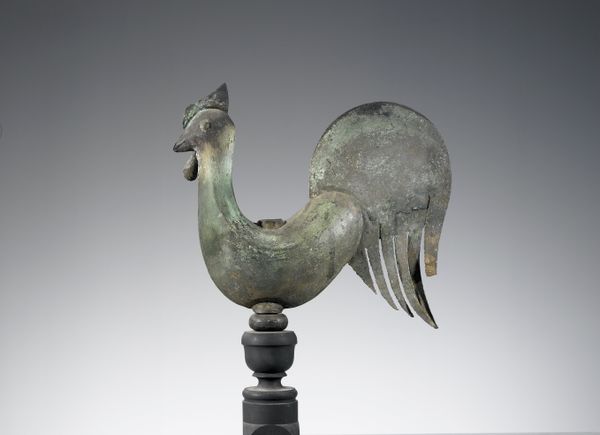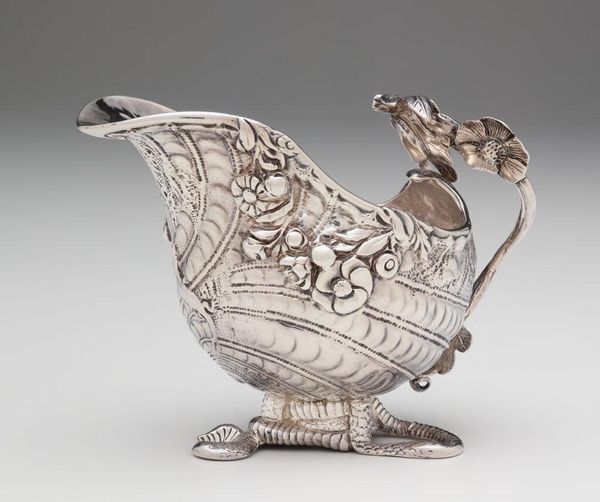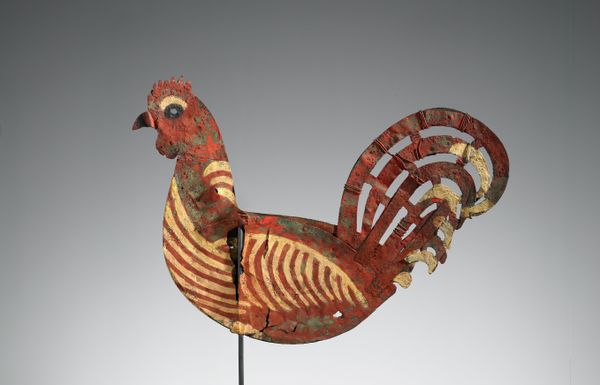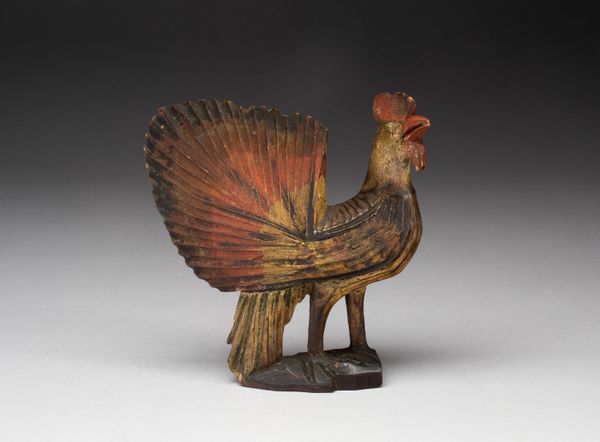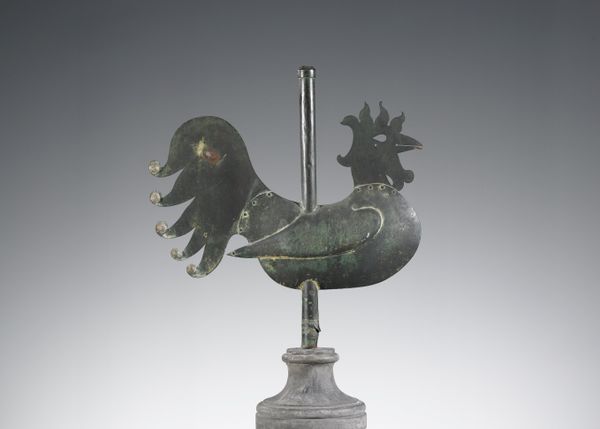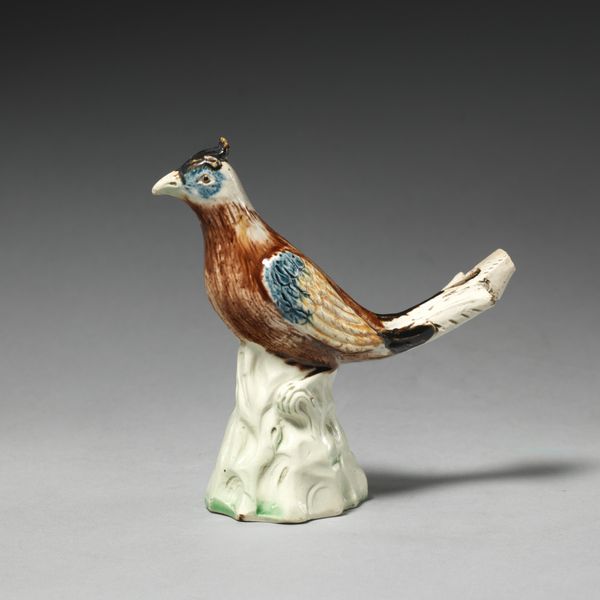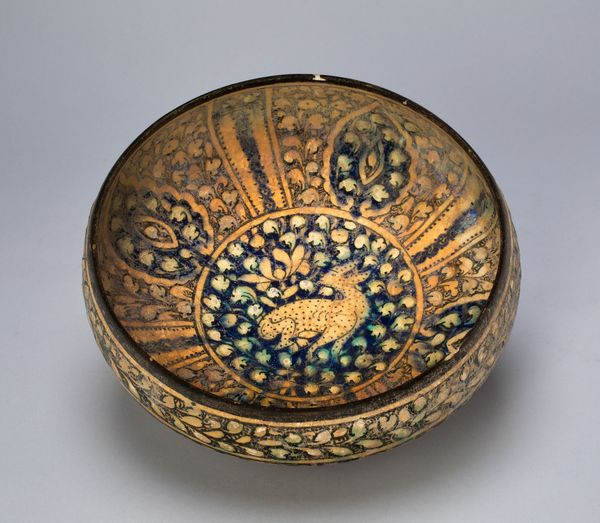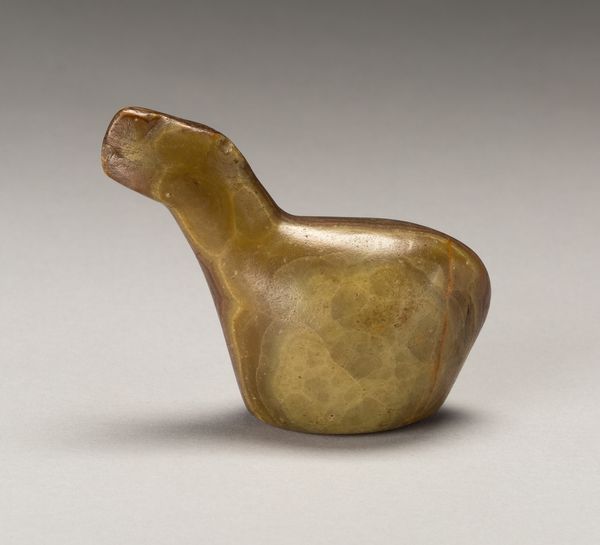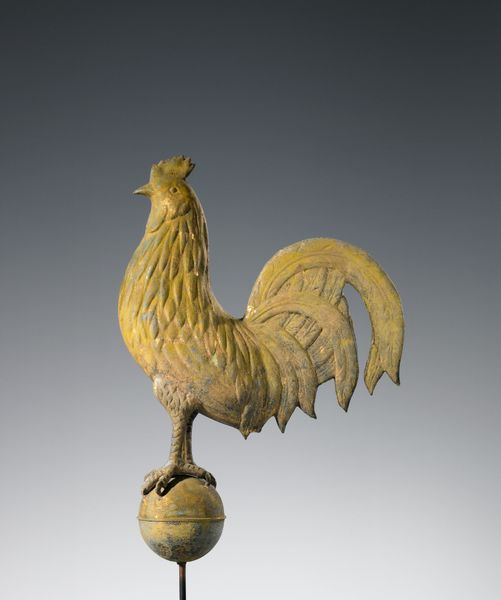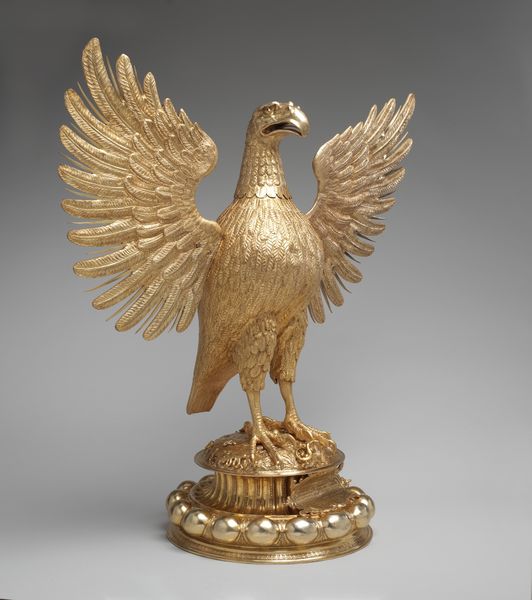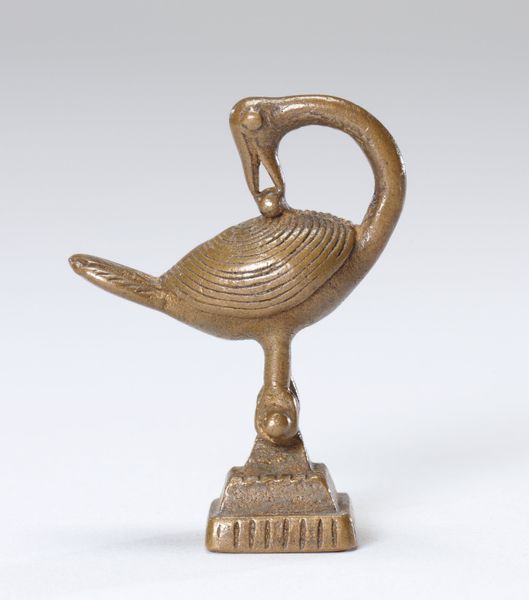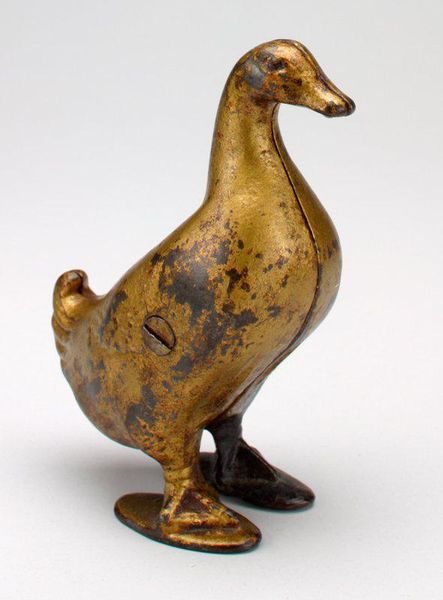
carving, metal, bronze, sculpture
#
medieval
#
carving
#
metal
#
bronze
#
figuration
#
sculpture
#
decorative-art
Dimensions: overall: 18.2 x 22.6 x 19.1 cm (7 3/16 x 8 7/8 x 7 1/2 in.) overall (height of turrets): 4.1 cm (1 5/8 in.) overall (diameter of base): 16.8 cm (6 5/8 in.) overall (diameter of disk): 8.2 cm (3 1/4 in.) overall (height of wall around base): 2.4 cm (15/16 in.)
Copyright: National Gallery of Art: CC0 1.0
Curator: Let's turn our attention to this extraordinary piece, a 13th-century bronze Pyx in the Form of a Dove, crafted anonymously. What's your first impression? Editor: It strikes me as quite remarkable! The form is compelling, perched on what looks almost like a fortified city wall—or perhaps it's more like a crown? The blue enamel is beautiful, juxtaposed against the gilded bronze. Curator: Indeed! These pyx were typically hung above the altar, and it is relevant to think about what that symbolized in a period of profound religious reformations regarding the laity's access to the Eucharist. Remember the Fourth Lateran Council’s decree of transubstantiation was a recent historical moment. Editor: Interesting. The craftsmanship seems quite precise, if a bit stylized. I find myself drawn to the geometric arrangement of the feathers, how the artist utilized symmetry to create a sense of balance and order. And yet, the texture of the feathers has almost a reptile effect. What do you think that tells us formally about the piece's symbolic context? Curator: Well, the dove as a symbol predates Christianity, but its association with the Holy Spirit and peace makes it a powerful statement. And during the early medieval period there was such debate regarding heretics within the orthodox belief of the church. The Eucharist at this moment of history in Europe wasn't just a ceremonial rite but the foundation for salvation and social harmony. So I feel that this specific symbolism is impossible to ignore. Editor: Yes, but note how the dove's wings, rendered in such defined, almost rigid lines, push back against its symbolic meaning. And those tail feathers! See how each plume is distinctly outlined and separated. It’s a controlled ornamentation, a triumph of design—semiotically speaking, an articulation of spiritual values through decorative discipline. Curator: Certainly, the artistry is impressive, yet these objects speak profoundly about issues of power, ritual, social control, and the reinforcement of specific ideologies. What are the material conditions that allowed such objects to exist? What implications arise when analyzing sacred ritual implements such as this? Editor: Questions well asked. Yet, returning to the art object itself—look again at how light must have played across the gilded surfaces, enhanced by the intricate texture. And let’s not forget this likely had its value amplified in numbers too. In other words, seeing these en masse. So even with your arguments regarding their purpose in regards to controlling belief in an orthodox point of view, let's acknowledge how well constructed this is to be mass produced! The artist clearly possessed an extraordinary sense of the spiritual married to practicality in function, so beautiful in its conception. Curator: An appropriate assessment, a dialogue between the temporal and divine captured in a single artifact that encourages me to understand better Europe's history and religious background during that time. Editor: I couldn’t have said it better myself! It's remarkable how the composition allows it to stand firmly even today.
Comments
No comments
Be the first to comment and join the conversation on the ultimate creative platform.
